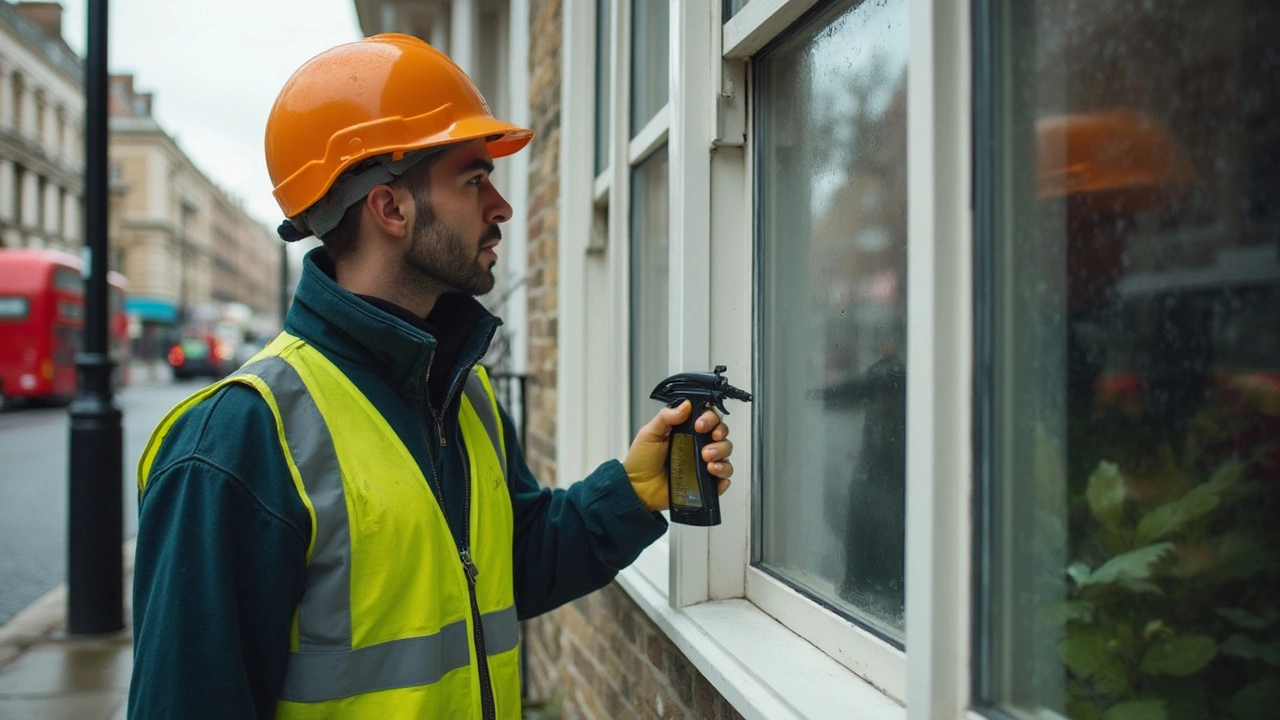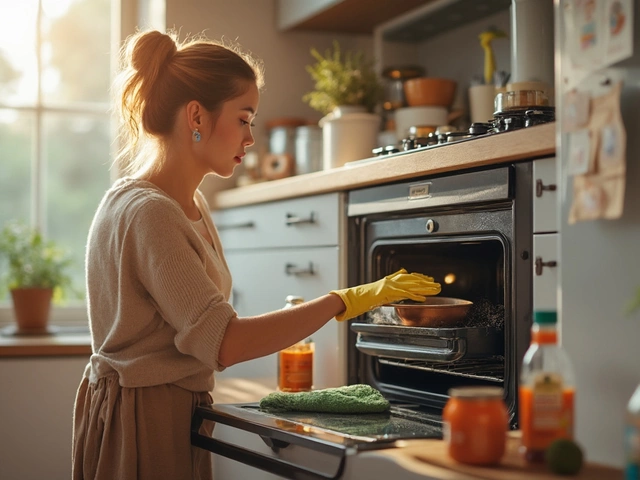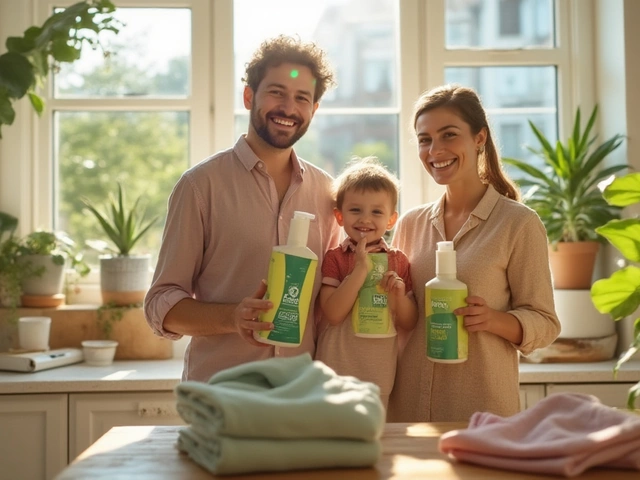You scrub, wipe, and still those streaks pop up when the sun hits—everybody’s been there. It’s not just about what you use, but how you use it. The best window cleaner won’t leave residue, dries fast, and saves you from scrubbing the same spot a dozen times. Store shelves are full of options, but do they actually beat a simple mix from your kitchen?
Forget the fancy labels for a second. It comes down to two big camps: store-bought sprays and homemade brews. Some cleaners have secret tricks (like vinegar or rubbing alcohol) that crush grime. Others just push the dirt around, which is super frustrating. The goal is always the same—bright, clear windows that look invisible. But which one gets you there fastest?
- Why Your Windows Still Look Dirty After Cleaning
- Types of Window Cleaners: Store-Bought vs. Homemade
- What The Pros Really Use
- Tips for a Streak-Free Shine
- What to Avoid: Common Window Cleaning Mistakes
- When to Clean Your Windows (and When Not To)
Why Your Windows Still Look Dirty After Cleaning
Nothing’s more annoying than wiping down your windows only to find cloudy patches, stubborn streaks, or those tiny specks still staring back at you. It’s not your fault—windows are magnets for mess. Hard water, airborne dust, pollen, fingerprints, even dog noses leave behind a film that cleaners don’t always remove, or worse, sometimes they just smear it around.
The type of water you use can mess things up. Hard water, packed with minerals like calcium, can leave behind chalky spots. If you’re filling your bucket from the tap, you might already be fighting an uphill battle. Also, if your cloths or squeegees aren’t clean, all you’re doing is moving old dirt onto new glass.
The biggest troublemaker, though, is residue. Lots of cheap cleaners have soaps or additives that promise a shine but actually leave a thin film, which attracts dust and grime right back. And if you wipe with paper towels, they can shred and leave fibers you’ll never stop seeing in the sunlight.
Here’s a quick look at the main culprits:
- Window cleaner with too much soap or unnecessary chemicals
- Using dirty tools or cloths
- Hard water stains from mineral deposits
- Wiping in direct sunlight (causes fast drying and streaks)
- Paper towels that leave lint
Don’t just take my word for it—check out the stats below. In a 2024 survey of homeowners, these were the top reported struggles when cleaning windows:
| Problem | Percent of People |
|---|---|
| Streaks after cleaning | 68% |
| Spots or mineral deposits | 49% |
| Dust/pollen returning quickly | 34% |
| Lingering cloudiness | 27% |
Keen on clean, streak-free glass? Getting why your windows look dirty is the first step to fixing it. Now let’s see what’s actually inside those cleaners lining your cupboard, and whether homemade options do any better.
Types of Window Cleaners: Store-Bought vs. Homemade
Let’s be real—when it comes to cleaning windows, everyone wants a window cleaner that actually works. You’ve got two main choices: that bottle you grab off the shelf or something you whip up at home. Both have their fans, but which one actually knocks out those streaks and grime?
First up, store-bought cleaners. Big names like Windex, Sprayway, and Invisible Glass promise streak-free results. Most use a mix of water, ammonia, alcohol, and some surfactants (soaps). Ammonia is what makes that sharp smell, and it really does help break down greasy fingerprints. But watch out—too much can irritate your skin or eyes if you don’t have good ventilation. Some newer formulas ditch ammonia and go for more eco-friendly stuff, but they can be hit or miss, especially on oily grime.
Homemade cleaners are booming—mostly because people hate paying for water in a bottle. The MVP recipe? Simple: equal parts white vinegar and water (some add a splash of dish soap if things are extra grimy). Vinegar cuts through mineral spots and dries fast so you don’t get those streaky lines. Plus, you skip the harsh chemicals, which is great around kids or pets.
Here’s a quick side-by-side for the main contenders:
| Cleaner Type | Main Ingredients | Pros | Cons |
|---|---|---|---|
| Windex (store-bought) | Ammonia, water, surfactants | Super effective, dries quickly | Strong smell, not great for tinted windows |
| Sprayway (store-bought foam) | Alcohol, surfactants, fragrance | No-drip foam, good on fingerprints | Weird on some older glass |
| Homemade Vinegar Mix | White vinegar, water, sometimes dish soap | Cheap, natural, safe | Smell lingers, tough on old oily grime |
If you’ve got hard water stains, vinegar is your best friend. For greasy finger marks left by kids (or adults who snack), ammonia-based sprays go to work fast. Most pros actually have both types handy, swapping between them depending on the job.
One tip: always skip paper towels. They leave lint behind and can actually add more streaks. Use a microfiber cloth or even a squeegee for way better results, no matter what cleaner you pick.
What The Pros Really Use
If you peek into a pro window cleaner's bucket, you'll notice a few things missing—mainly the fancy blue sprays you see in stores. Most professionals don’t bother with the typical store brands because they slow you down and leave streaks if you’re not careful. Instead, they go simple and effective: a squirt of dish soap, a splash of water, and the right tools make a world of difference.
The gold standard in the business is a mix of regular dishwashing liquid and water. Add about a teaspoon of liquid soap to a gallon of water—no more, or you’ll spend the afternoon rinsing off soap streaks. Some pros swear by adding a capful of ammonia for extra grease-busting power, but that’s mainly for super dirty windows. Vinegar? It works in a pinch, but a bit of soap does the job and leaves a smoother finish.
The magic, honestly, is in the tools. Here’s what’s in almost every pro’s kit:
- Squeegee: The absolute must-have for clean, streak-free glass. Pros use 12 to 18-inch blades for speed and bigger coverage.
- Microfiber cloths: Way better than paper towels—they don’t shed fuzz or leave lint.
- Scrubber or sponge: For loosening grit or bird poop before you go in with the squeegee.
- Bucket: Big enough to dunk your tools without making a mess.
Some reliable pros, like those in the International Window Cleaning Association, recommend this basic setup. You’ll find the same gear backstage at hotels, restaurants, and even stadiums. A 2024 industry survey found over 80% of professional window cleaners use a homemade solution (mostly dish soap and water) instead of premade bottles.
| Cleaning Solution | Percent of Pros Using |
|---|---|
| Dish soap & water | 82 |
| Vinegar & water | 12 |
| Commercial cleaner | 6 |
So, what’s the takeaway? If you want results like the people who clean skyscraper windows, it’s not about buying the most hyped-up product on the shelf. Stick with the pro combo—a simple soap solution and a good squeegee—and you’ll see why they never bother with anything else. That’s how you get that window cleaner finish everyone wants without overcomplicating things.

Tips for a Streak-Free Shine
Nothing’s more annoying than seeing streaks across your glass after you just spent time cleaning. People often blame the product when it’s usually the method that’s off. Want streak-free windows every time? Here’s how the pros actually pull it off—and how you can do it too, using any decent window cleaner.
- Pick the right time: Clean windows on a cloudy day or in the evening. If direct sunlight hits the glass, the cleaner dries too fast and leaves marks.
- Use two microfiber cloths: Use one towel for washing, another dry one for buffing. Old shirts and paper towels can leave lint or just spread gunk around.
- Spray, don’t soak: Light, even sprays work best. If you drench the window, cleaning fluid pools and causes streaks to form as it dries.
- Go top to bottom: Gravity’s your friend. Wipe from top to bottom, so drips don’t run onto already cleaned spots.
- Squeegee time: For big windows, a squeegee beats any rag. Make one steady swipe then wipe the blade, and repeat. No swirling circles—just straight passes.
- Buff by hand: Always follow up with a dry microfiber towel. This grabs leftover residue or moisture you missed.
- No skimping on clean water: If you’re using a bucket, don’t reuse dirty water. Change it out when it looks cloudy, or you’ll paint the dirt right back on.
Want to level up your game? Here's a quick comparison on cleaning tools that help prevent streaks. Check out just how much some of these options can speed up the job and leave you with a cleaner finish:
| Tool | Streaks Left Behind | Cleaning Speed (Window per 5 mins) | Reusable? |
|---|---|---|---|
| Microfiber Towel | Low | 2-3 | Yes |
| Squeegee | Very Low | 4-5 | Yes |
| Paper Towels | Medium | 1-2 | No |
| Old T-Shirt | Medium-High | 1 | Often |
Another key: don’t skip tiny edges or corners. Streaks love to hide there, so give a quick swipe with a cotton swab or the corner of your towel. Stick with these habits and your windows stay way cleaner, look sharper, and you won’t dread the job next time.
What to Avoid: Common Window Cleaning Mistakes
Let’s be real, most window cleaning fails come down to a handful of classic mistakes. Getting your glass to that crystal-clear level isn’t just about picking the best window cleaner—it’s what you do with it that counts.
- Cleaning in direct sunlight: Sunlight makes cleaner evaporate too fast, leaving streaks before you even get a chance to wipe. Cloudy or cooler times of day are your friend.
- Using the wrong cloth: Paper towels can leave lint, while regular bath towels can smear dirt. Microfiber cloths or squeegees are way better. They grab dirt and don’t scratch glass.
- Skipping the pre-clean: Dust and cobwebs pile up in window corners. If you skip dry wiping or brushing the frames, you’re just grinding grit into the glass and making a bigger mess.
- Over-spraying: Too much cleaner pools at the edges, which leads to drips and streaks. A light mist is all you need unless your windows are seriously filthy.
- Neglecting the sills: All that cleaning solution runs down—and if your sills are dirty, you’re dragging gunk right back up onto your freshly cleaned glass.
- Not changing your water or cloths: If your rinse water or cloth turns gray, swap it out. Dirty tools just spread grease and dust around.
- Using ammonia on tinted windows: Window tint and ammonia don’t mix. It can wreck the tint and make the glass look cloudy or faded. Stick with tint-safe cleaners for those.
Get these basics right, and you’ll dodge most of the headaches that make people hate cleaning windows. A little prep, decent tools, and the right timing make all the difference.
When to Clean Your Windows (and When Not To)
Timing is everything when it comes to getting that perfect glass finish. Most people don’t realize that picking the wrong day or weather can mess up even the best window cleaner. Direct sunlight might seem great—until it dries cleaner too fast, leaving streaks that are way harder to fix. Overcast days or early mornings work way better since the sun isn’t zapping all the moisture away.
Rain makes people think it's pointless to bother, but a light drizzle isn’t always a dealbreaker. Still, skip cleaning if storms, wind, or big temperature swings are rolling in. Dirt and pollen can blow right onto your still-damp glass, undoing your effort in minutes.
Let’s talk seasons. Spring and fall usually serve up the most grime: pollen, dust, and a foggy layer after winter. If you live near the city, set reminders for every three months (city pollution and traffic kick up dust constantly). Out in the country or suburbs? Once or twice a year usually does the trick unless you’re right by a busy road or construction.
- Best times for cleaning windows: cloudy days with mild temps (around 10–20°C or 50–68°F)
- Avoid cleaning during: freezing temps, hot afternoons, stormy days, or right after mowing the lawn
- Really dirty after rain? Wait till the next day—wet, muddy spots can smear worse if you rush
Check out this table to see how often most people clean their windows based on where they live:
| Location | Recommended Cleaning Frequency |
|---|---|
| Urban (city) | Every 3 months |
| Suburban | Twice per year |
| Rural area | Once per year |
| Coastal or near construction | Every 2-3 months |
Catching windows at the right time saves time, plus your results actually last. Watch out for birds nesting or insects swarming in spring—nobody wants to clean around those messes. And if windows get dirty again the day after you clean? Usually, it’s the weather or pollen—not the cleaner’s fault.




